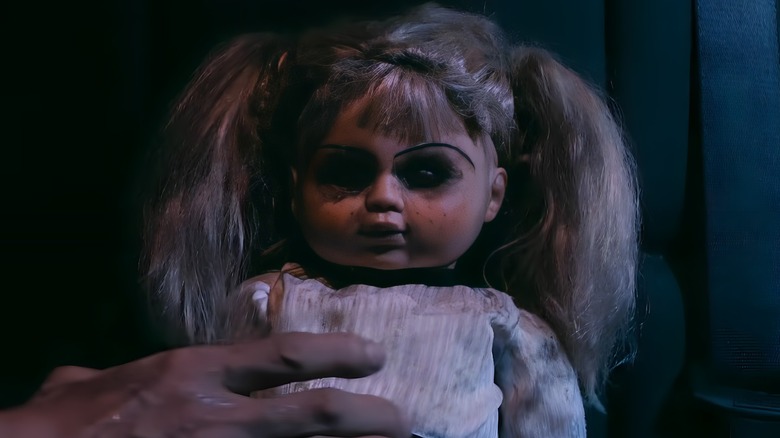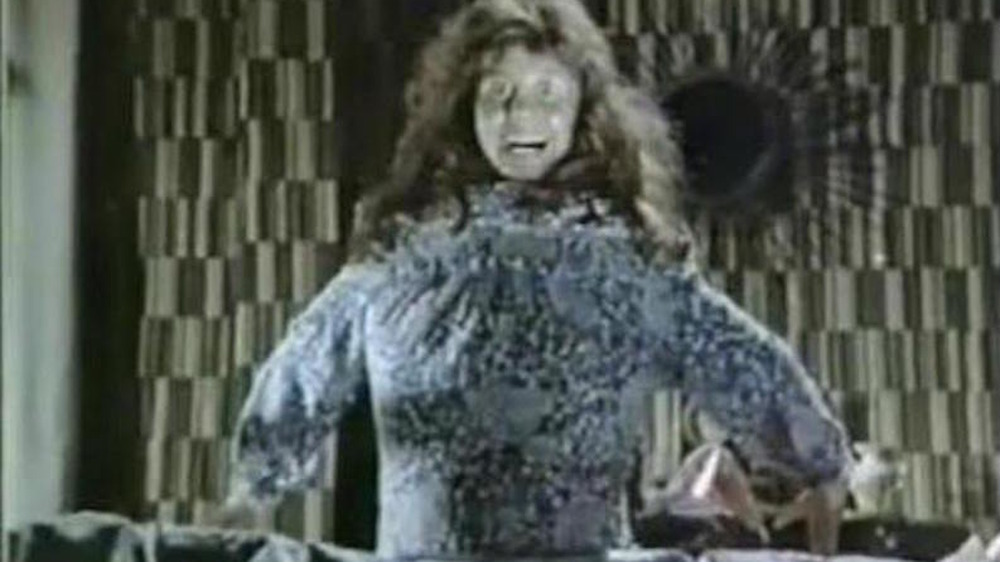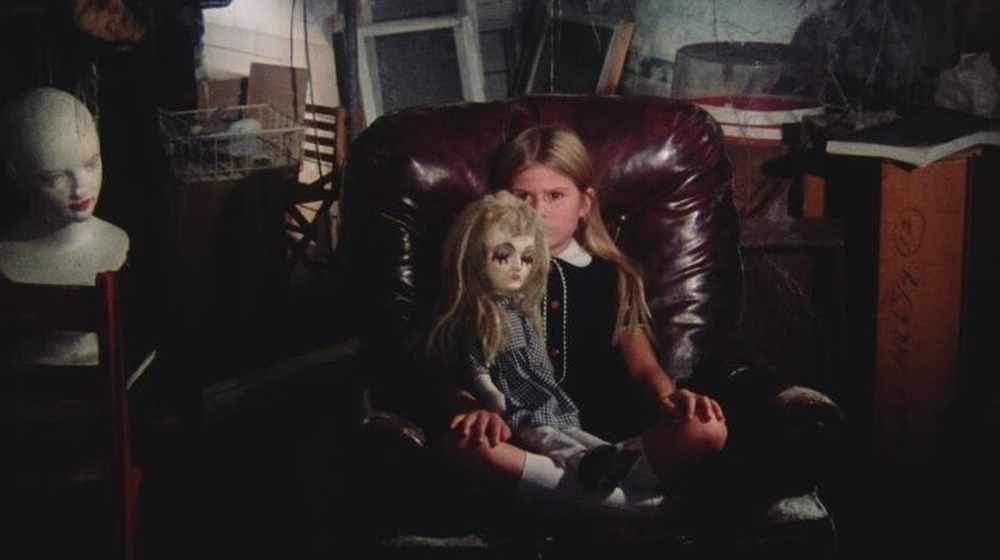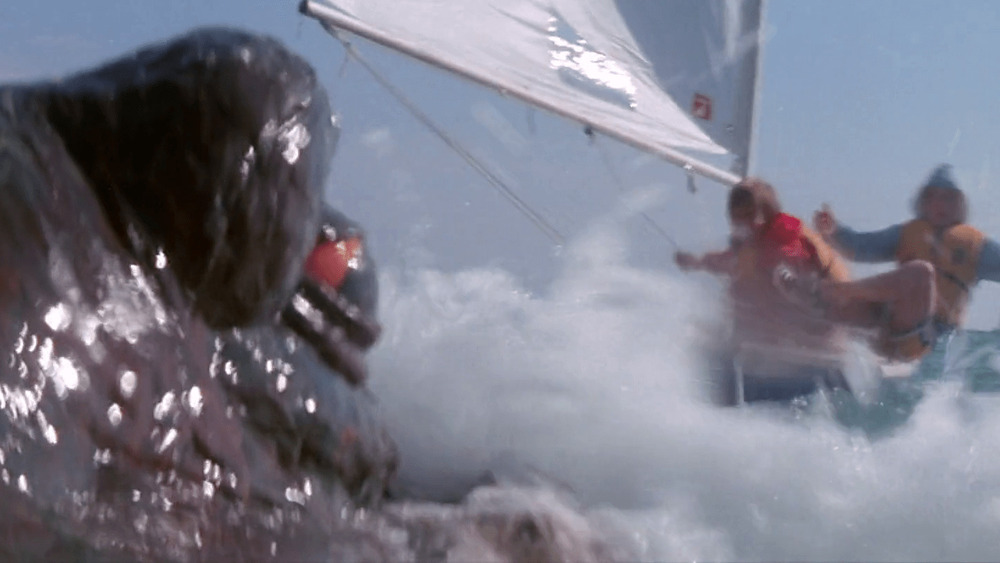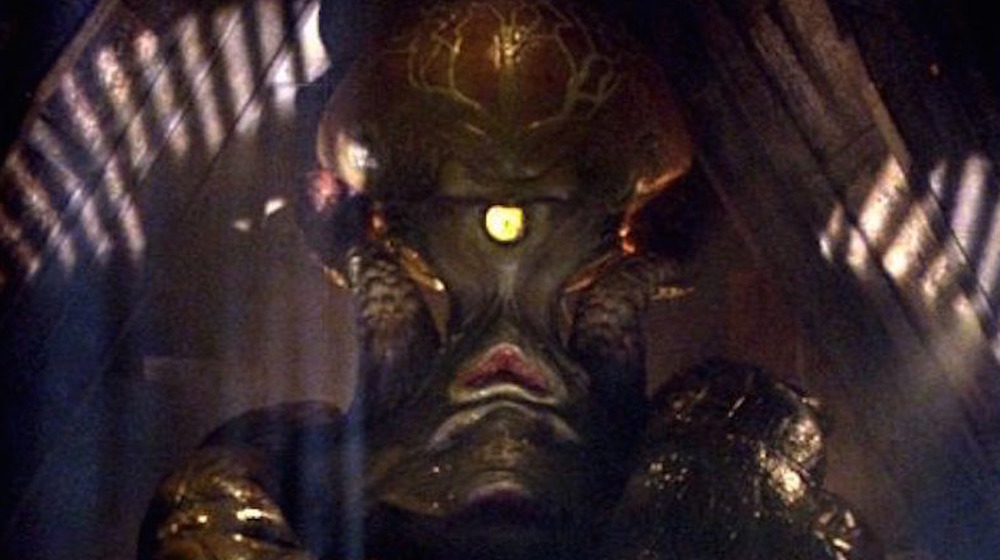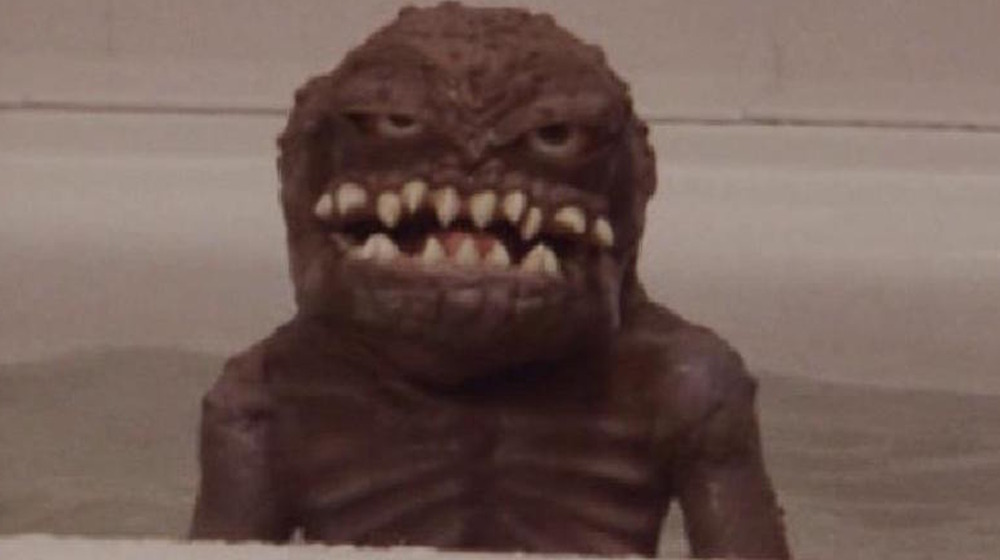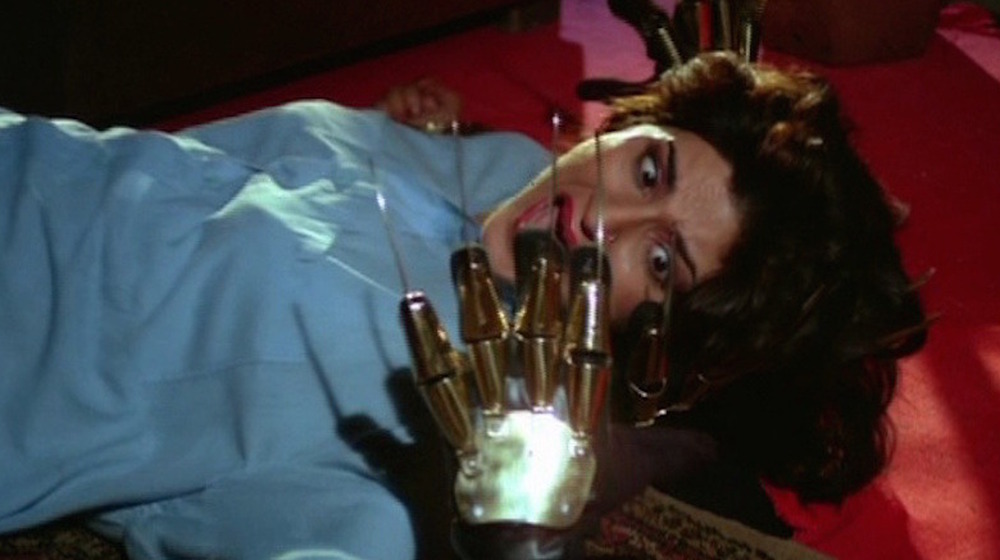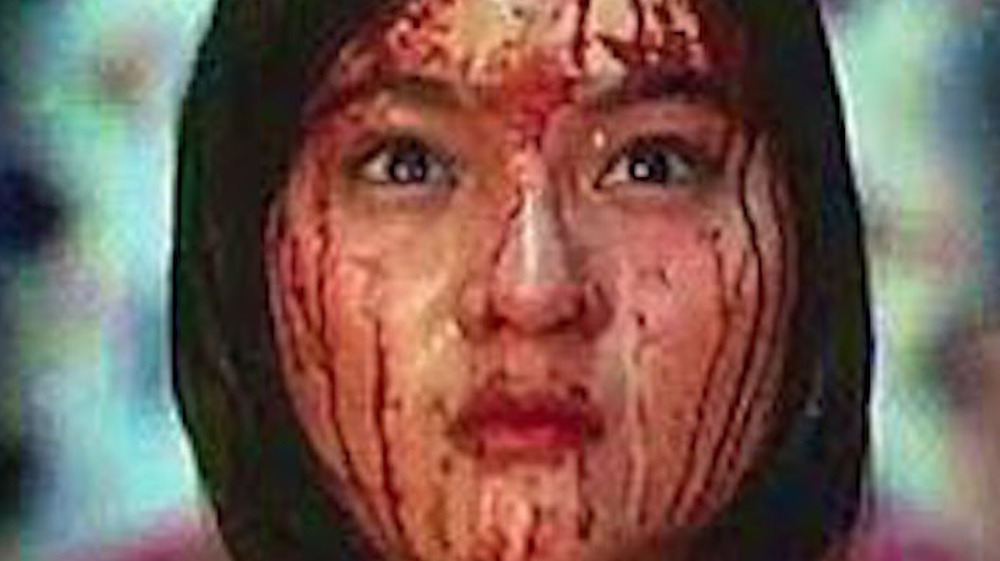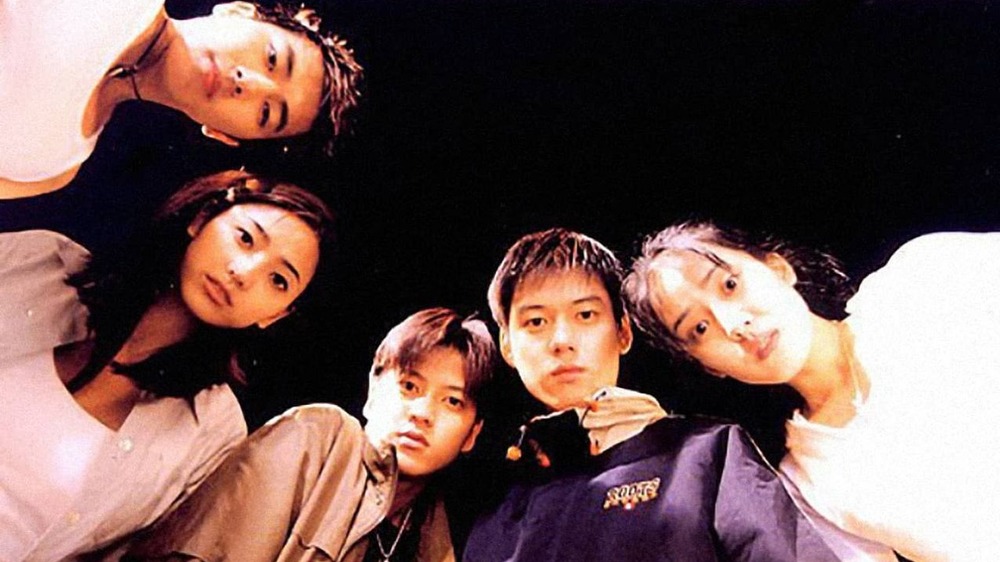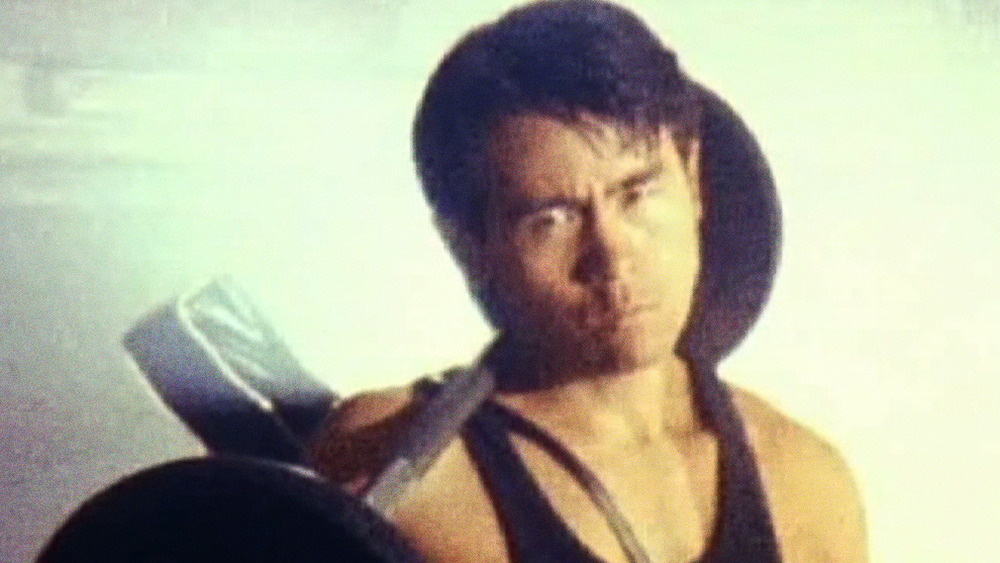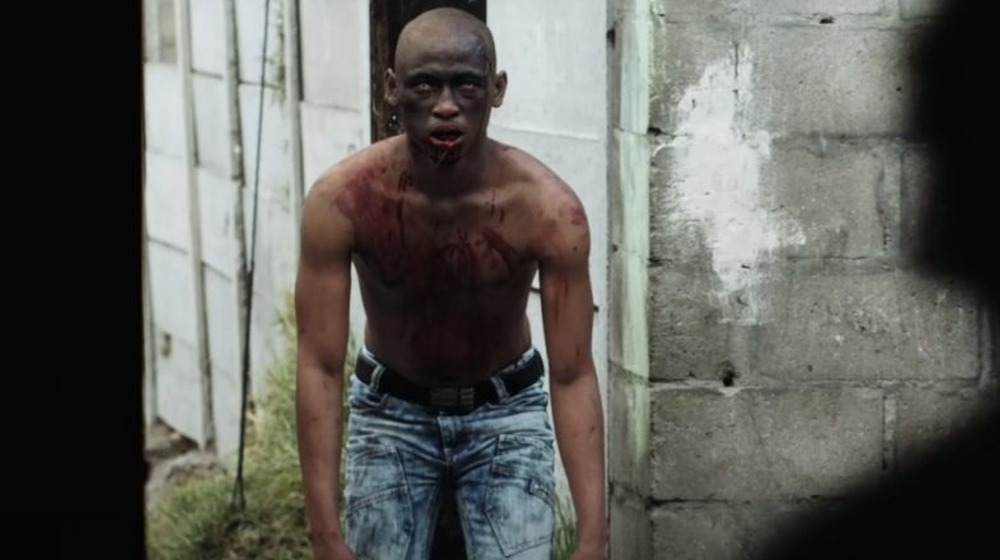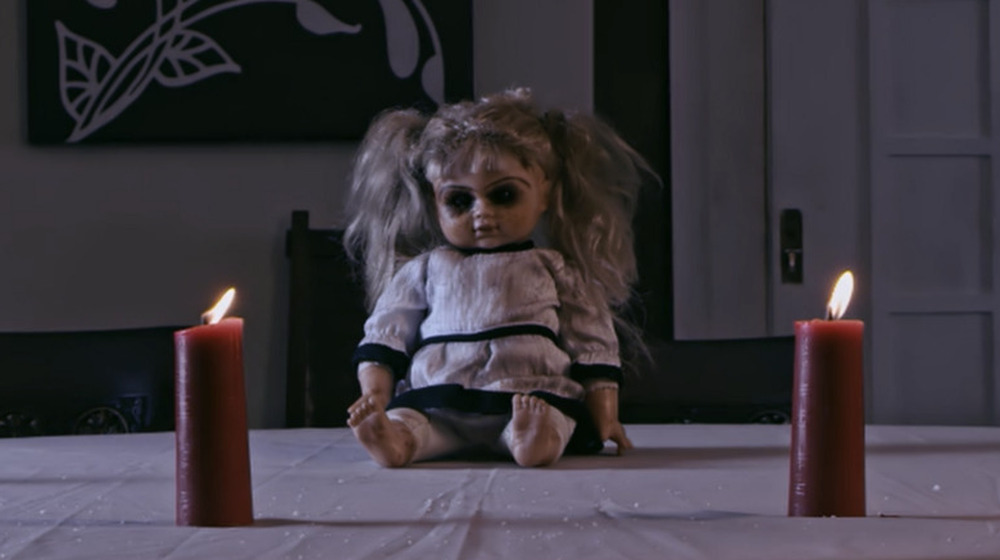International Knockoffs Of American Horror Films
All movies borrow elements from the films that came before them, and horror movies are no exception. The Universal monster films of the 1930s took their visual cues from German Expressionist films like The Cabinet of Dr. Caligari, and Hammer Studios wove the Universal pictures into their graphically Gothic interpretations. The slasher films of the 1980s liberally adapted their body count storylines from Alfred Hitchcock's Psycho and the early films of Italian horror director Mario Bava, and the '90s/2000s horror boom were direct and affectionate homages to the slasher. The equation goes on an on, and finds its way into nearly every sub-genre of scary movie.
However, there's a difference between homage and imitation, and again, horror films are no exception. Each successful monster movie or creepy chiller has generated its share of look-alikes – producer/director William Castle enjoyed a run of films in the 1960s that hinged almost entirely on aping Psycho, like Homicidal and Strait-Jacket, and "mockbuster" studio The Asylum has fooled many a moviegoer into thinking that Paranormal Entity was Paranormal Activity. But some of the most brazen knock-offs of American horror films have originated from international territories. Many European and Asian countries, taking advantage of lax copyright laws and their distance from Hollywood, have cranked out a seemingly bottomless flow of derivative horror titles that draw on, and in many cases reproduce without authorization, whole chunks of blockbusters like The Exorcist, Alien, Friday the 13th, Evil Dead – again, the equation (or reproduction) goes on and on.
Many of these knock-offs are unmemorable efforts, designed entirely for a quick and cheap money-grab. Others have earned a degree of notoriety for warping the original movie to fit budget, audience taste and filmmaker talent (or lack thereof), resulting in some surreal and hilarious films that become, in a lopsided way, wholly original unto themselves. Below is a list of the strangest international imitations of American horror movies from around the world.
Even though you probably know how these movies end, because you've seen the titles they rip off, consider this your warning that spoilers will follow.
Say you love Seytan, the Turkish Exorcist
Turkish popular cinema has earned a reputation for producing highly unauthorized remakes of American movies, many of which feature characters, scenes, and in the case of Turkish Star Wars, whole scenes lifted from the source material. In most cases, the Turkish product rarely syncs up with the Stateside film: Turkish Star Wars really doesn't follow the New Hope plot at all, and Turkish Jaws only features a shark for a few minutes.
But in the case of 1974's Seytan, a.k.a Turkish Exorcist, you get what is a scene-by-scene remake of William Friedkin's landmark horror film, albeit on a budget that might seem threadbare for home movies.
Director Metin Erksan – a former arthouse filmmaker whose 1963 film Susuz Yaz (Dry Summer) won major awards at the Venice and Berlin International Film Festivals – does his best to deliver all the major moments from the English-language Exorcist: the discovery of a demonic statue in the desert, Ouija communication with an unseen "friend," and a showdown between two exorcists and a possessed girl with all the expected head spinning and pea soup puking.
Without Hollywood funding and Dick Smith's effects, however, what results is hopelessly threadbare. The film does offer some unique elements, such as exorcists Cihan Unal and Agah Hun being Muslim and warding off the demon with Zamzam water drawn from a holy site in Mecca. But for the most part, Seytan is as well-intentioned but inept as that imitation of The Babadook your kid brother shot on his iPhone.
Cathy's Curse, the Great White North's answer to The Exorcist
Grindhouse and drive-in habitués saw a lot of Exorcist carbons in the early to late 1970s: Italy alone cranked out a seemingly ceaseless stream, from the re-edit of Mario Bava's Lisa and the Devil to The Anti-Christ, while the rest of Europe and the world did their best to keep up with Abby, Demon Witch Child, I Don't Want to Be Born, The Manitou and more.
One of the most inept international Exorcist exports was Cathy's Curse, a 1977 French-Canadian effort that folds creepy doll and reincarnation elements into its confusing story about a young girl (Randi Allen) possessed by the spirit of her deceased aunt. The fact that the U.S. theatrical version of Cathy's Curse is missing a few crucial moments of exposition that might have made it more comprehensible doesn't take away from its chief selling point: watching Cathy carry out a supernatural terror campaign on everyone around her. This includes sending her nanny out a window, driving her mother insane, psychokinetically assaulting her crazy-old-coot neighbor, slashing a fellow little kid, and freaking everyone out with her hideous doll. Shot on the cheap in and around Montreal, Cathy's Curse proves that Canadians aren't nice about everything.
Tentacles: Italian Jaws with arms
Steven Spielberg's Jaws is one of several American movies that have generated the greatest abundance of knock-offs, both at home and abroad (others include Star Wars and Alien). Italian producers cranked out multiple shark attack movies in the 1970s and 1980s, and Jaws continues to fuel the low-budget and "mockbuster" industry today (Sharknado, anybody?).
As is often the case with movie rip-offs, the imitations start to feel stale after the umpteenth iteration, which often prompts filmmakers to employ the Next Best Thing principle: if a monster shark puts moviegoers' butts in the seats, shouldn't another big aquatic creature generate the same response? That approach has generated some fun creature features (Alligator, Orca) and some oddities (Monster Shark); somewhere in between there is Tentacles, a 1977 U.S.-Italian production which pits the residents of a California beach town (played by La Jolla and Pismo Beach) against an 80-foot-long octopus with an attitude.
Director Ovidio Assonitis (who also directed a better-than-average Exorcist clone, Beyond the Door) grafts the basic plot of Jaws onto his octopus adventure and adds slumming American actors: bad guy industrialists Henry Fonda and Cesare Danova disrupt the monster's home with their construction efforts, sheriff Claude Akins ignores journalist John Huston and marine scientist Bo Hopkins' warning, and lots of people get eaten by the big, rubbery cephalopod. He also grafts a totally out-to-lunch finale involving Hopkins' killer whale pals, which he has taught to understand human language (!)
Contamination is an Italian Alien with extra eggs
Shortly after completing the gonzo Star Wars cash-in Starcrash – the only chance you'll ever have to see David Hasselhoff and Christopher Plummer in the same film – writer-director Luigi Cozzi began work on a science fiction/horror hybrid based on Ridley Scott's Alien.
Originally titled Alien Arrives on Earth (before another Italian Alien knock-off, Alien 2: On Earth, was released that same year), Cozzi's film actually shucks any connection to Alien save for the eggs, which here are more organic time bombs than embryos. The eggs are part of a world domination plot by a huge Earthbound extraterrestrial operating out of a Colombian coffee plantation (yes, really), which is investigated by military officer Louise Marleau, wisecracking NYPD cop Marino Mase, and dissolute ex-astronaut Ian McCulloch (from Lucio Fulci's Zombie) – all American characters played by international actors (Canadian, Italian, and British, respectively).
There's more on-screen goo in Contamination, which is also known as Alien Contamination, than in Alien and Aliens combined, and the film's signature gross-out – bodies that explode after being squirted by the eggs – is appreciably disgusting, both of which do much to smooth over the nonsensical plot. Cozzi, who contributed story and/or second-unit direction to several of Dario Argento's films, also crafted a re-edit of Godzilla, King of the Monsters – the American revamp of Godzilla – which added a new soundtrack, hallucinatory color, and footage of real war atrocities to boost the violent content!
Gakidama: don't call it a Gremlin
Though online wags have taken to calling Gakidama the "Japanese Gremlins," this 1985 direct-to-video feature is less of a direct carbon of the Joe Dante film than a companion piece of sorts to the whole "little monster" sub-genre that sprung up in its wake, and includes such guilty pleasures as the Ghoulies franchise, Hobgoblins, and others.
Here, the pint-sized horror is a supernatural creature, a sort of meat-eating version of the hitodama, a spirit that has detached itself from a recently deceased person. The gakidama, which looks like a bit like the critter in the toilet on the Ghoulies one-sheet, decides to latch onto a photographer that has come to its forest in search of ghosts, and after crawling into his ear (!), takes control of him until emerging, fully grown, from his mouth.
To director Masayoshi Sukita's credit, the creature's arrival isn't the starting point for Gremlins-styled comic mayhem, but rather some curious twists involving a mystery man with an unpleasant interest in gakidama and the photographer's wife, whose desire for a child finds an unusual solution in the little critter. To his credit, Sukita packs all of those plotlines, as well as some gross body horror, weirdo humor, and a hilariously awkward beast, into a film with a running time of only 54-minutes.
Shake hands with Shakaal, the Indian Freddy Krueger
There are actually two Indian imitations of Wes Craven's A Nightmare on Elm Street: 1989's Khoon Murda, which takes a faithful, if frequently seedy approach to the source material, and 1993's Mahakaal (The Monster). The two have a tangled history: producers Shyam and Tulsi Ramsay, whose family oversaw some of the most popular Indian horror films and television series of the 1980s, began filming Manakaal in 1988 but were forced to halt production when Mohan Bhakri –- their chief competitor in the Hindi horror business –- released his Nightmare knock-off to theaters before them (which, as the AV Club noted, explains why Mahakaal's insufferable comic relief, Johnny Lever, goes on and on about Michael Jackson's Bad).
Though Murda got there first, Mahakaal is the more enjoyable of the pair: it's a traditional "masala" film, folding as many disparate elements from other genres into its base stock as possible (if you like musical numbers, you have several to choose from here), as well as references to other Elm Street titles and even other horror films, like a visual quote from George Romero's Day of the Dead.
Most importantly, Mahakaal has an amusing faux Freddy in Shakaal, an evil magician who sacrificed children before being buried alive (not burned) by a group of parents, including the policeman dad of Anita, the film's ersatz Nancy. The film's finale is also an amusing, though probably unintentional spoof of indestructible '80s horror heroes with Shakaal taking an axe to the head, a pole through the chest, and losing both legs in a guillotine before finally getting finished off by a hydraulic press. That IS one way to stave off sequels.
Carrie goes to the Philippines in Anak ng dilim
The Philippines has a long and robust history of producing imitations of other films, which has resulted in homegrown takes on everything from The Road Warrior (Stryker), E.T. (Kokey), and Final Destination (Sundo) to titles that you wouldn't expect to generate a knock-off, like Mrs. Doubtfire (Wanted: Perfect Father) and even TV shows like Dawson's Creek (Tabing Ilog).
One carbon that seems to enjoy a small but devoted following among Filipino moviegoers of a certain age is Anak ng dilim (Child of Darkness), which is a 1997 remake of Brian De Palma's take on Carrie. The feature, directed by veteran actor and filmmaker Arsenio "Nick" Lizaso (who as of 2020, was the chairman of his country's National Commission for Culture and the Arts), stars Gladys Reyes, a popular performer on Filipino TV soaps, as Adela, a shy teenager whose torment at the hands of her classmates is echoed by her home life, which is ruled by a domineering relative.
As with the Stephen King novel and De Palma film, Adela discovers her psychic abilities, which manifest through the minor destruction of various household items, at the same time that she is nominated homecoming queen (or the Filipino equivalent) at school. The bloody bucket-drop is followed by a modest recreation of De Palma's flaming finale, albeit without the body count (the set takes the worst beating). And then, there's a happy ending!
I Know What You Did Last Summer in South Korea, a.k.a. The Record
America isn't the only country with a claim on derivative horror movies. Case in point: Record, a South Korean slasher film from 2000 that borrows liberally from I Know What You Did Last Summer, Scream, and other teen-oriented stalk-and-slash titles for its rote story about a murder victim appearing to return from the grave for revenge.
Here, a nerdy high schooler is lured to a remote vacation house and brutally murdered by his less morally inclined classmates; the usual disposal of the body and vow of silence among the guilty is soon followed by the appearance of a mystery figure in a surgical mask and hazmat who knocks off their number, one by one.
Though not entirely without merit – directors Kim Gi-hun and Kim Jong-seok give their film a lot of visual polish – The Record's recycling of material from other movies that weren't all that memorable to begin with makes it a bit like watching a cover band: you recognize all the songs, but know they've been done better.
Bach ke zara, Bollywood's bonkers Evil Dead
As with Nightmare on Elm Street, you have your choice of unauthorized Indian remakes of The Evil Dead: the 1988 film Bhayaanak Mahal and 2008's Bach ke zara. The former is only loosely based on Sam Raimi's breakout indie horror film, but the latter is so slavishly devoted to reproducing the plot and visuals of Evil Dead that it's less of a knock-off than a Xerox.
While Salim Raza's affection for the film is palpable, he isn't quite as technically adept as Raimi, even at that early stage of his career, and isn't able to generate the same sort of assault on the senses as the source material. He's also stuck with a budget that makes the threadbare original seem sumptuous by comparison – Raza's aesthetic could be politely described as "backyard" – so he fills in the gaps in tried and true Bollywood fashion: with a musical number.
It's really more of a music video, apparently shot after production had completed and featuring actress/singer Rakhi Sawant (the producer's sister), but it does manage to distract you from the film itself, which at two hours, only feels like twice that length. Also, if you've ever wondered about the romantic life of Ash and his pals, Raza devotes considerable screen time to the adult-minded antics of their Indian counterparts.
Bloody Muscle Body Builder in Hell: a Japanese Evil Dead
Amazing title aside, writer/director/star Shinichi Fukazawa's Bloody Muscle Body Builder in Hell does an impressive job of boiling down the salient points of Sam Raimi's Evil Dead and Evil Dead 2, complete with flights of visual anarchy and gallons of gloppy gore, into a 62-minute feature that was shot on 8mm, edited, and reworked over a 17-year period (roughly 1995 to 20012).
Fukazawa even stars as the film's fake Ash, a bodybuilder who returns to his claustrophobic childhood home, where his father dispatched his psychotic wife and left her body on the premises. The unexpected visit revives his undead mother, who unleashes a very Raimi-esque campaign of demonic possession and dismemberment until Fukazawa responds by smashing faces and crushing skulls with a variety of implements, including his favorite dumbbells.
A highly-caffeinated pace, inventive camerawork, and Fukazawa's Bruce-Campbell-on-steroids routine (right down to the hair) make Bloody Muscle Body Builder in Hell one of the more enjoyable knock-offs in recent years.
Last Ones Out takes 28 Days Later to Africa
A man wakes up in a hospital to discover that the outside world has been overrun by a plague of the living dead. Sound familiar? Well, it's not The Walking Dead or 28 Days Later, both of which open on similar notes.
It's actually Last Ones Out, a South African feature from 2015 which follows a quarter of survivors – the aforementioned patient (co-producer Greg Kriek), a doctor, medical intern, and hospital staffer – as they trek across Southern Africa to first rescue the doctor's son and then meet a convoy that will take them to safety.
Made for pennies and filmed in less than two weeks, Last Ones Out is an ambitious flick that shows writer/director/editor Howard Fyvie can turn out a watchable movie under less than ideal conditions. The problem, though, is that while Last Ones Out delivers some suspense and shivers, there's also nothing particularly original about it. The opening quotes from better-known horror efforts more or less indicate what to expect from the film: a sort of greatest-hits approach to zombie horror, with boxes ticked off on every expected turn in the plot. A fresher take on zombies in Africa is The Dead, a 2010 British production filmed in Burkina Faso and Ghana.
Meet The Doll, Annabelle's Indonesian relative
Since 2016, Indonesian filmmaker Rocky Soraya has cultivated a homegrown franchise anchored around deadly dolls that echoes Blumhouse's Conjuring and Annabelle series.
Like those films, The Doll, its 2017 sequel and direct follow-up (2018's Sabrina), all concern toys with supernatural histories that wreak havoc in the lives of the families that own them. Past tragedies are typically the energy that charges the dolls' supernatural batteries: the smoky-eyed toddler toy in Doll harbors the spirit of a girl murdered in a home invasion, while the death of a girls' parents seems to spark life in a hideously grinning toy in Sabrina (and there's another connection with the Annabelle series – no kid in his/her right mind would come within a mile of these nightmarish items).
Where the Doll franchise deviates from its American cousin is the levels of violence in each film, which make the murders and shiver-shudder scenes in Annabelle look like quaint TV-movie fare, and more than make up for the occasional bit of underwhelming CGI. All three Doll titles have begun airing on American streaming services, which may pave the way for Soraya – currently hard at work on the fourth Doll film – to bring his terrible toys to the States.
